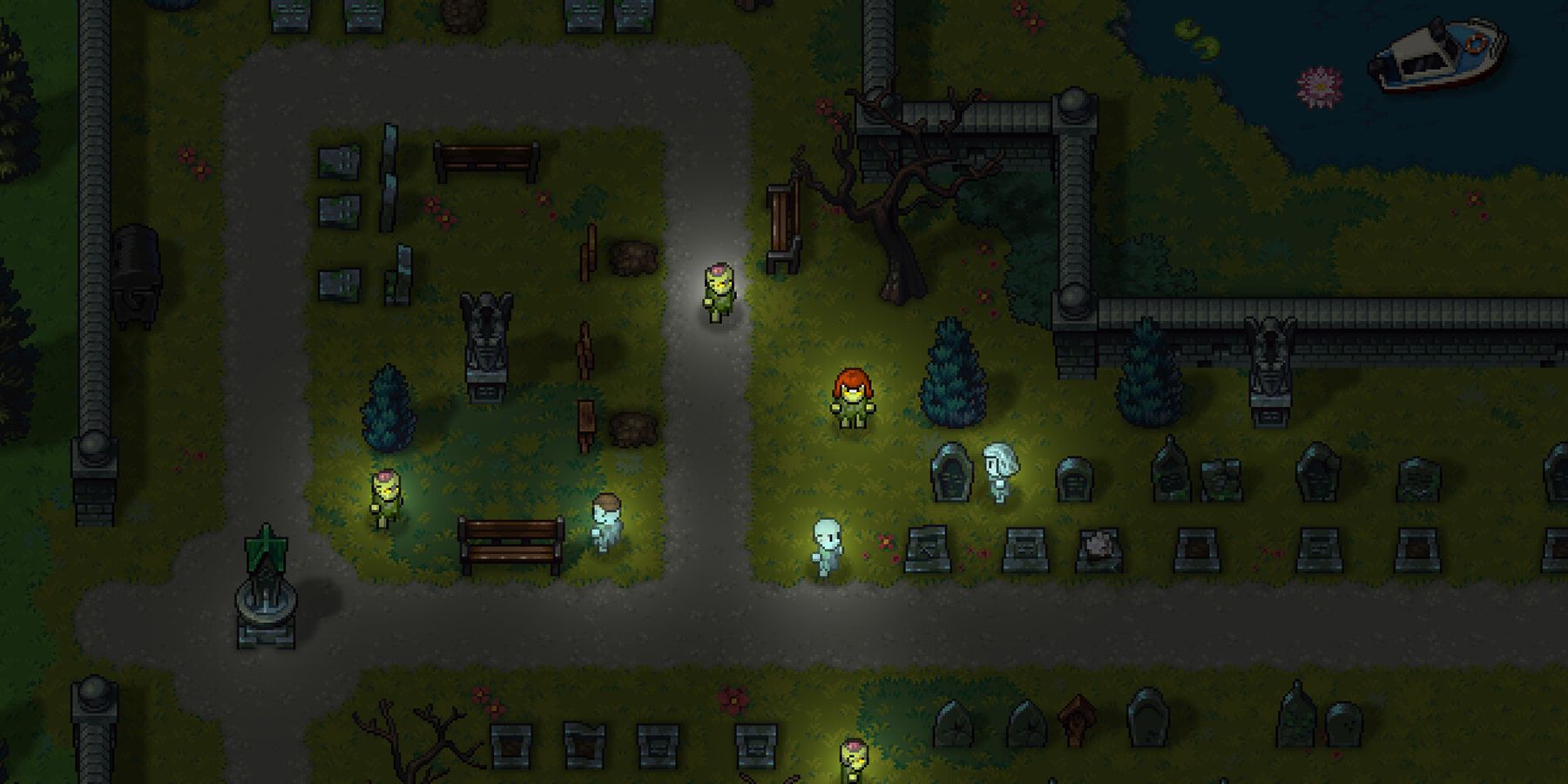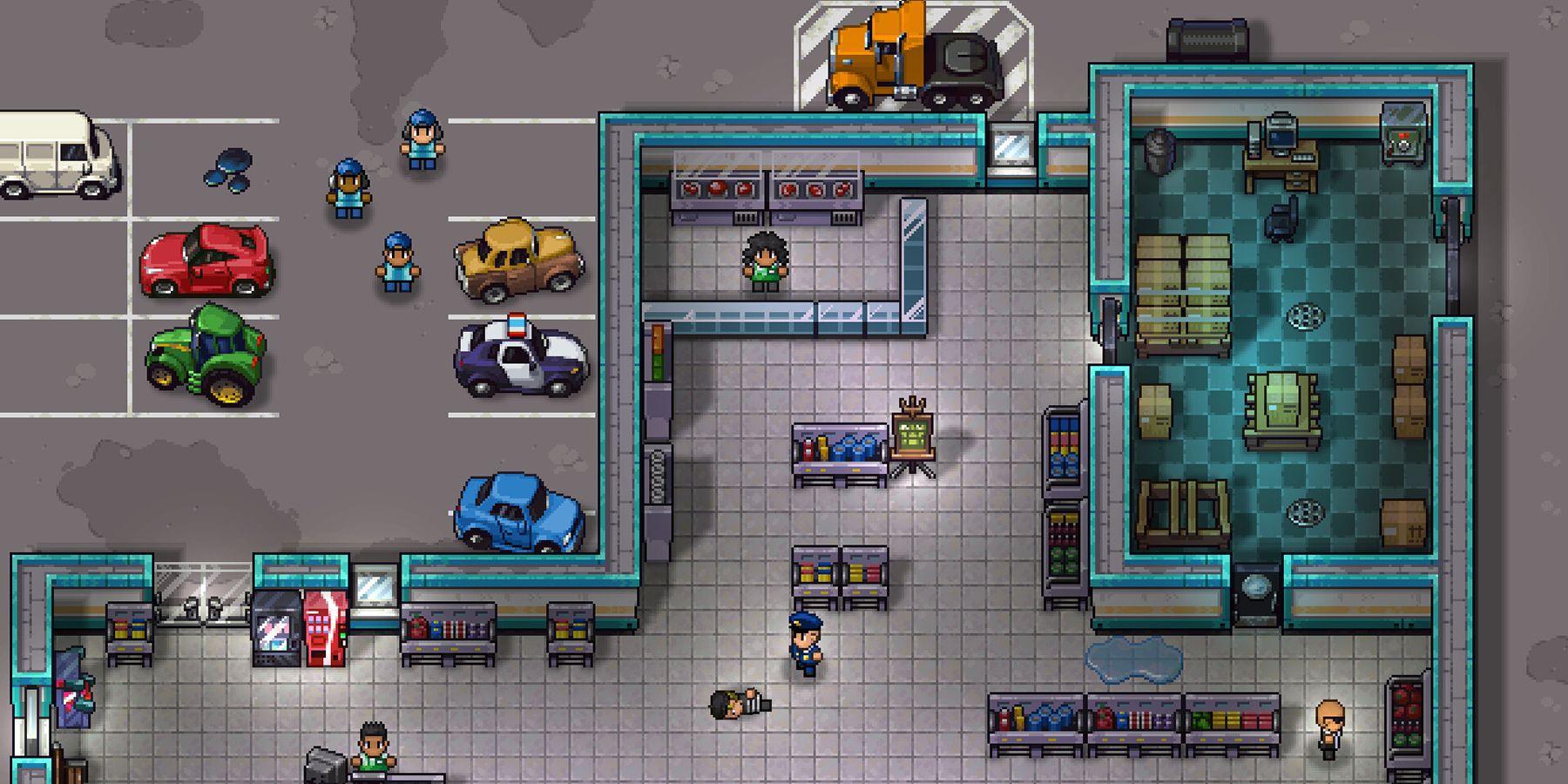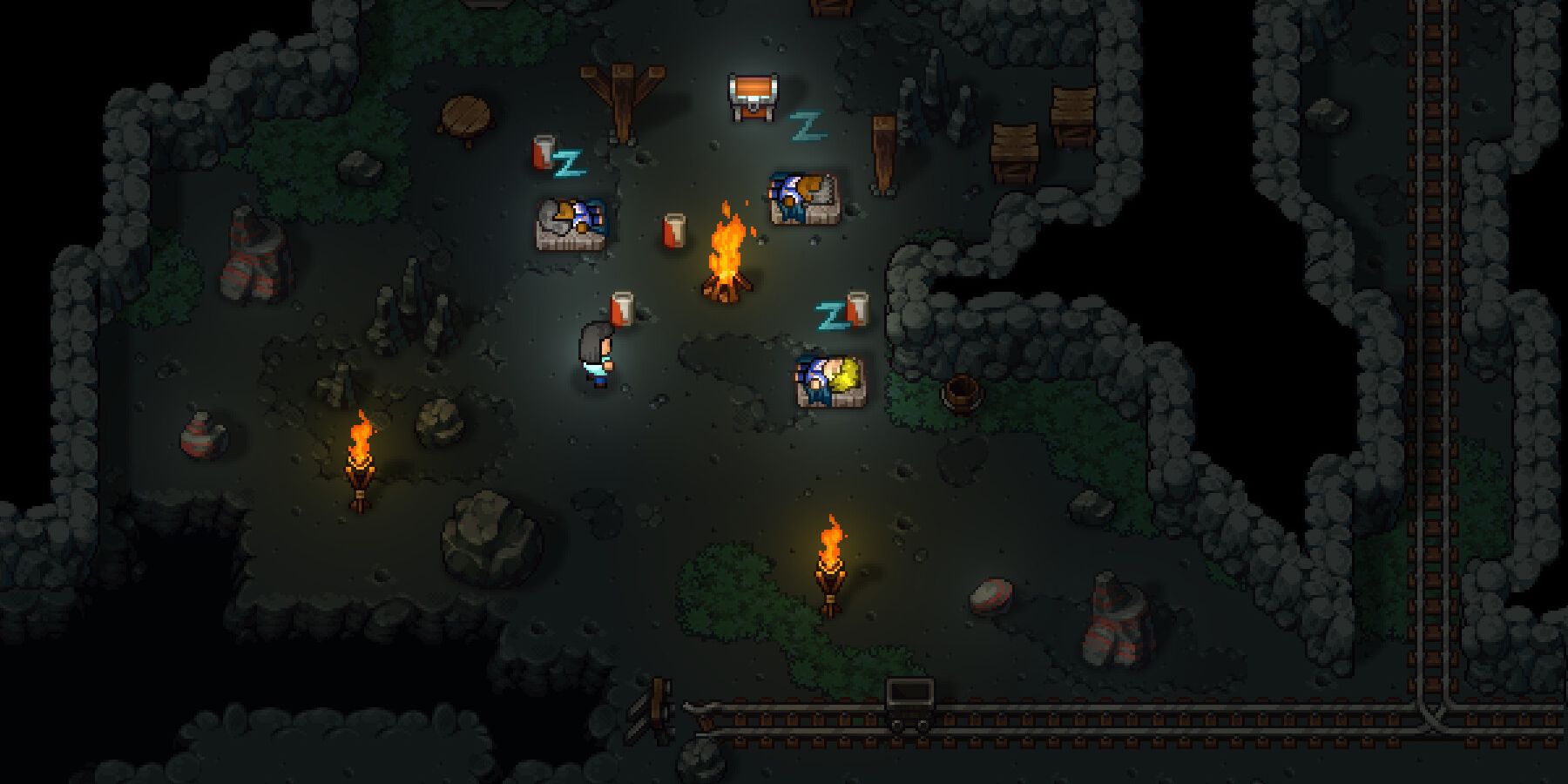Streets of Rogue 2, the newly announced sequel to Matt Dabrowski’s Grand Theft Auto meets Deus Ex meets top-down pixel mayhem simulator, is on track for an Early Access release in 2023. The original Streets of Rogue has accrued an “overwhelmingly positive” reception on Steam, and the sequel could ascend to the heights of indie stardom with its new conceit: procedurally generated open-worlds, as opposed to a linear progression of levels.
Game Rant spoke to Dabrowski about the development challenges associated with crafting an ambitious sequel, such as changing graphical styles while capturing the soul of the original game. He also shared his insights on what makes playing and developing roguelikes so appealing.
Detail vs. Clarity in Pixel Art Design
In the development announcement detailing Streets of Rogue 2 on Steam, Dabrowski mentioned he was grappling with the challenges associated with maintaining readability amid a graphical upgrade that overhauls everything from sprites to lighting effects.
“In the original game, you wanted to be able to look at a scene and parse it really quickly. Because there are so many options you have to deal with a given obstacle. Like a hideout, for example. You see the door, you see the air vent, you think ‘maybe I can put something in there,’ but then you have to look for the air vents to see if they will actually affect the guards inside.”
The original Streets of Rogue‘s graphics have an arcade-like appeal, and they excel at highlighting the various options that exist in the game world; whether relevant to the player’s current class or not. In addition to making the game easier to play, this readability also essentially baits the hook for future playthroughs by teasing other solutions to a problem for specific classes. Preserving that same at-a-glance coherence will be crucial for maintaining the same kind of anarchic energy and freedom of choice that defined the first game, while suggesting possibilities for future runs.
Dabrowski and his pixel artist, Thomas Feichtmeir, have put a lot of work into making the worlds of Streets of Rogue 2 feel denser, and the results are evident. Rather than classic arcade vibes, the sequel feels like something from the golden age of pixel graphic RPGs, with contemporary flourishes like ambient lighting systems. Like most modern pixel art darlings, there is little ambiguity about which parts of the world are interactive. The key to attaining that quality, according to Dabrowski, lies in little details like how interactive items catch light, the thickness of sprite outlines, and other subtle things that become effectively invisible within the context of play.
Variety is the Spice of Life in Streets of Rogue
Roguelikes have exploded in popularity, and enjoyed something of a renaissance with groundbreaking indie hits like Hades and Slay the Spire alongside AAA entries into the genre like Returnal. According to Dabrowski, the genre’s appeal from a development standpoint is how people can easily attain an enormous breadth of content.
“[A] big part of it is you can get a lot of content pretty cheaply from a programming standpoint. People have played Streets of Rogue for hundreds of hours, and I don’t think they would be doing that if they were playing the same levels.”
Dabrowski believes that a tremendous degree of variance in a single playthrough is the hallmark of a satisfying roguelike. Every run feels different from the one before it, not only because a player refines their skills, but because the basic terms of the game change. Whether organizing divine boons into specific builds with Hades, changing classes and perk combinations in the original Streets of Rogue, or exploring a new permutation of perpetually changing environments in Returnal‘s Atropos, smart procedural generation allows developers to deliver on the promise of a fresh experience every time.
In a genre thick with competition, remixing content within the same constraints often won’t cut it anymore. It takes a novel premise to elevate the now-common promise of endless possibilities. Fortunately, the open-world style of games like Skyrim and Stardew Valley merged with the anarchic energy and characterful classes of Streets of Rogue sounds like a winning formula. Yet to leave a mark on the industry as a whole, great roguelikes need at least one more ingredient.
Streets of Rogue 2 and the Hook of Challenge
Dabrowski said “if you can beat a game on your second run, you have a problem as a developer.” While Souls-like games demand mastery via memorization, the development of hand-eye coordination, and a great deal of patience, roguelikes reward improvisation and tactical exploitation of the title’s mechanics. If victory becomes a foregone conclusion, players have no motivation to experience the variety on offer. Failing is part of the appeal in roguelikes. Mastering their loops is (usually) less focused on refining coordination, and more about learning how to take advantage of the game’s systems.
If variety is the bait to entice players, challenge is the hook that will keep them coming back for more. It creates a dual appeal that calls a gamer’s desire for mastery, and perks their curiosity to wonder what else is possible. That’s something Dabrowski hopes to capture in his coming release.
Streets of Rogue 2 is currently in development for PC, with a release projected for 2023.
Source link
[colabot]


